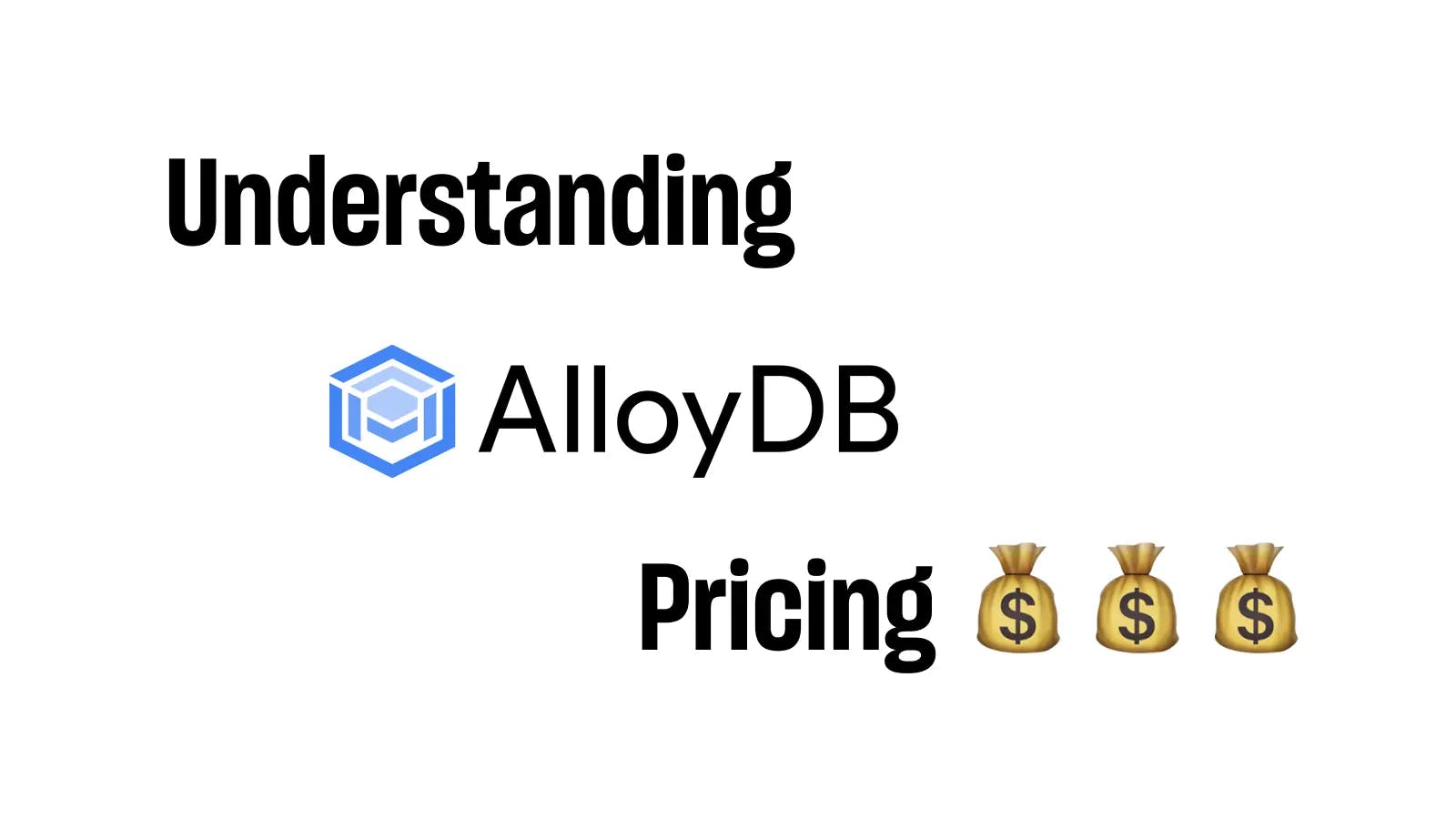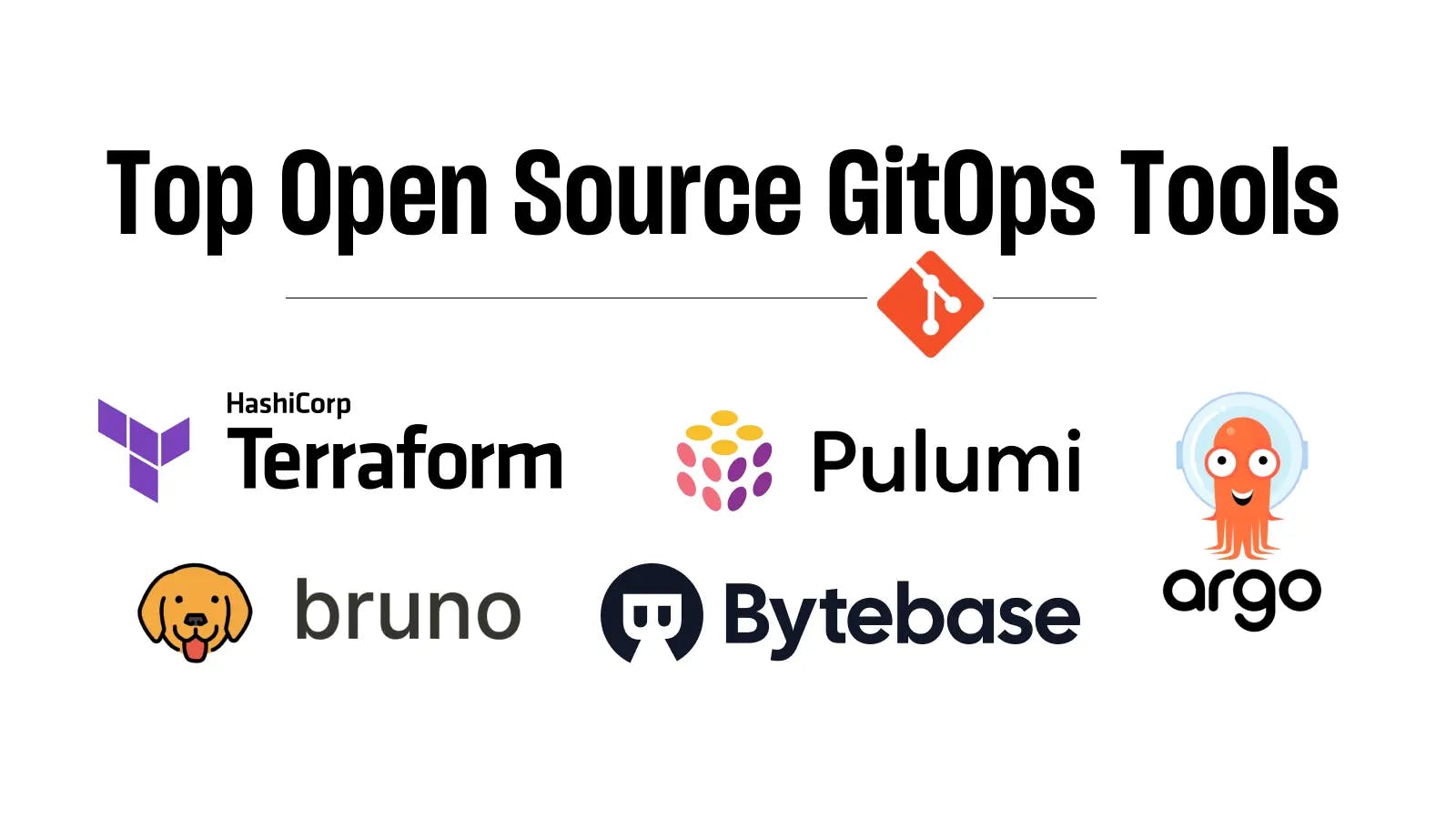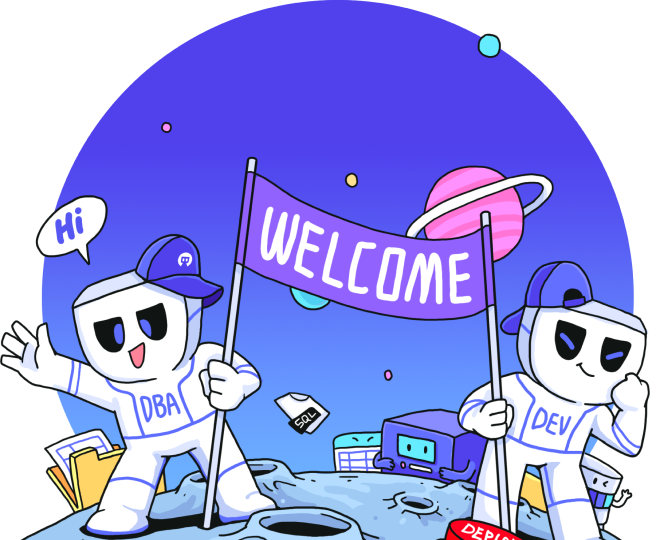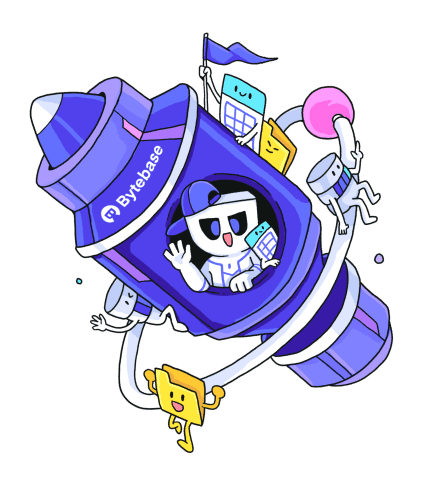Bytebase vs. DBeaver: a side-by-side comparison for database management
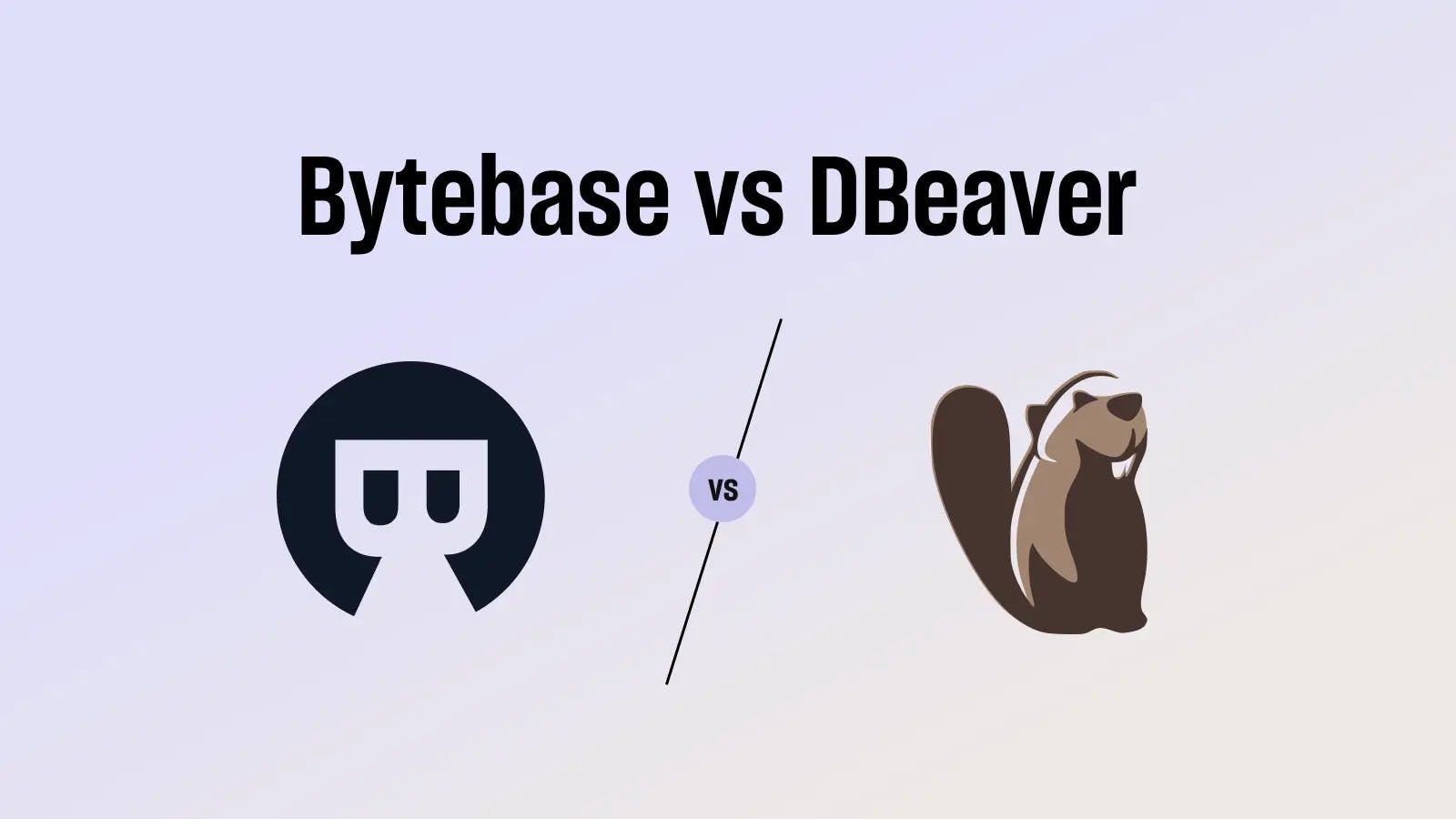
While interacting with databases, a suitable tool can significantly boost your efficiency. In this article, we will compare two popular database management tools, Bytebase and DBeaver, to assist your evaluation.
What Bytebase and DBeaver have in common
- Support database management through a GUI, featuring capabilities such as querying, exporting, data visualization, and more.
- Tiered pricing, offering both free and paid plans.
- Support for a wide range of databases, including SQL and NoSQL.
- Open source, DBeaver has a long history, while Bytebase is growing faster.
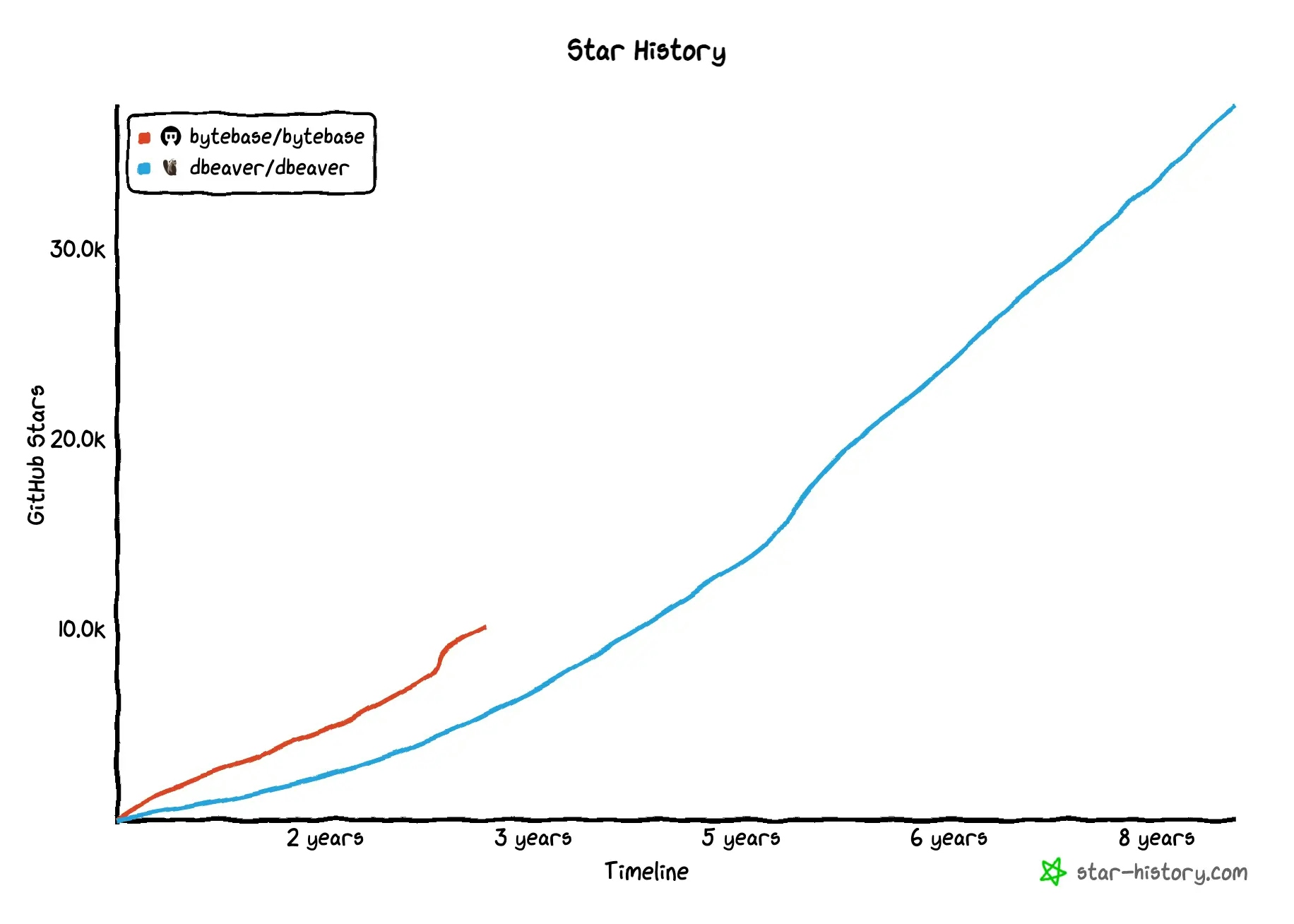
What are the differences between Bytebase and DBeaver?
The most significant difference between them is Bytebase is server-side built for team. This means DBA can centralize data access control, data masking and audit logging. On the other hand, DBeaver is client-side built for single user mode.
| DBeaver | Bytebase | |
|---|---|---|
| Product position | Powerful local SQL client | A collaborative database development platform |
| Developer interface | Client-side, desktop-based | Server-side, web-based |
| Installation | Jave-based, require JVM | Deploy Go-binary with no external dependency |
| Supported databases | 100+ | 20+ |
| Query | ✅ | ✅ |
| Change | Direct | Review workflow |
| Access control | ❌ | ✅ Free for basic version / Paid for advanced version |
| Data masking | ❌ | ✅ Paid |
| Compare Schema | 1:1 Paid | 1:N Free |
| Audit log | ❌ | ✅ Paid |
Product position
-
DBeaver: A universal database tool that starts as an individual SQL client and later expands to include a team version. Its primary focus is on individual database management, offering a comprehensive set of features.
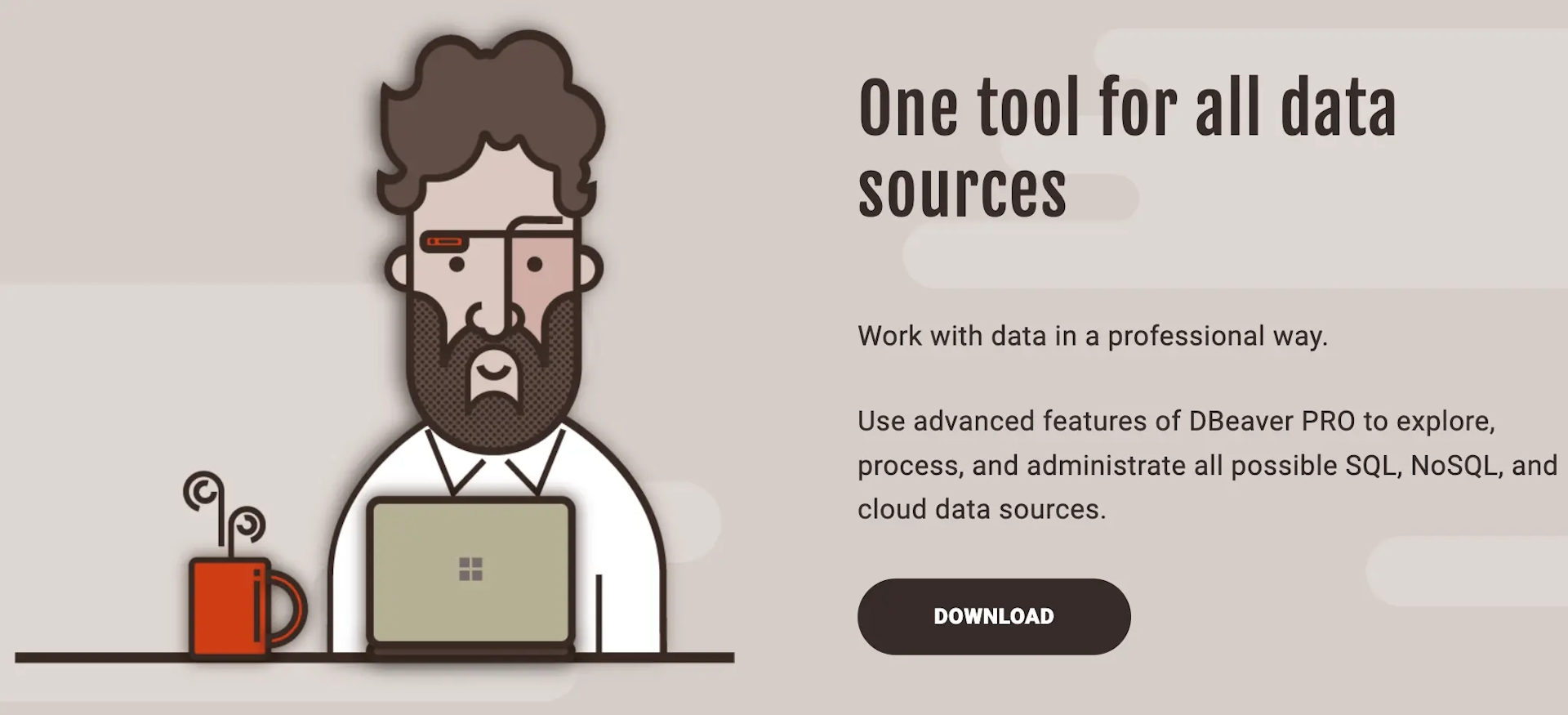
-
Bytebase: The GitLab/GitHub equivalent for Database DevOps, designed for developers, DBAs, and platform teams. It begins as a team collaboration tool dedicated to change management and evolves into a universal database tool. Its focus is team collaboration, offering tailored features like access control, data masking, SQL review, and custom approval flows.
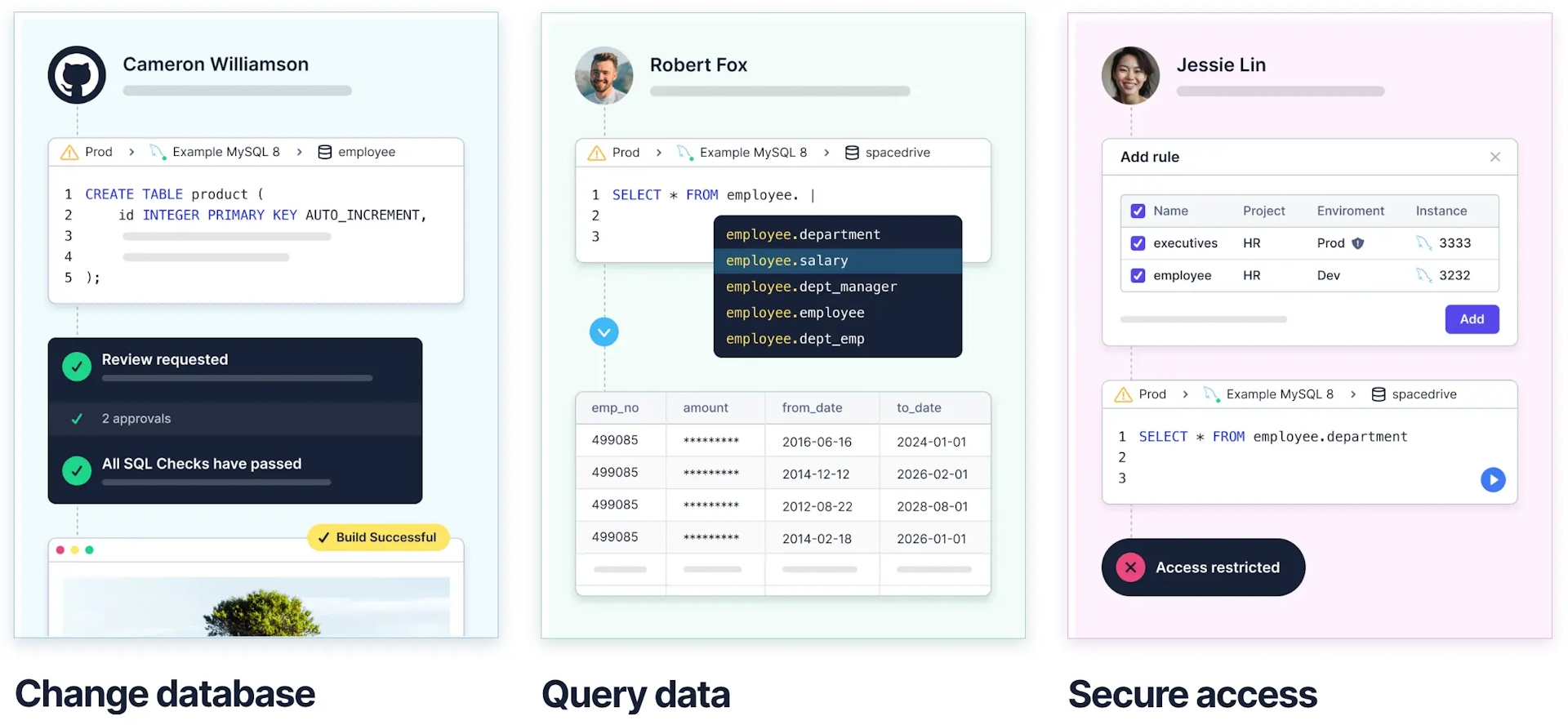
Developer interface
-
DBeaver: A desktop-based GUI tool compatible with Windows/macOS/Linux. To run a team version, you need Linux/macOS to deploy a host.
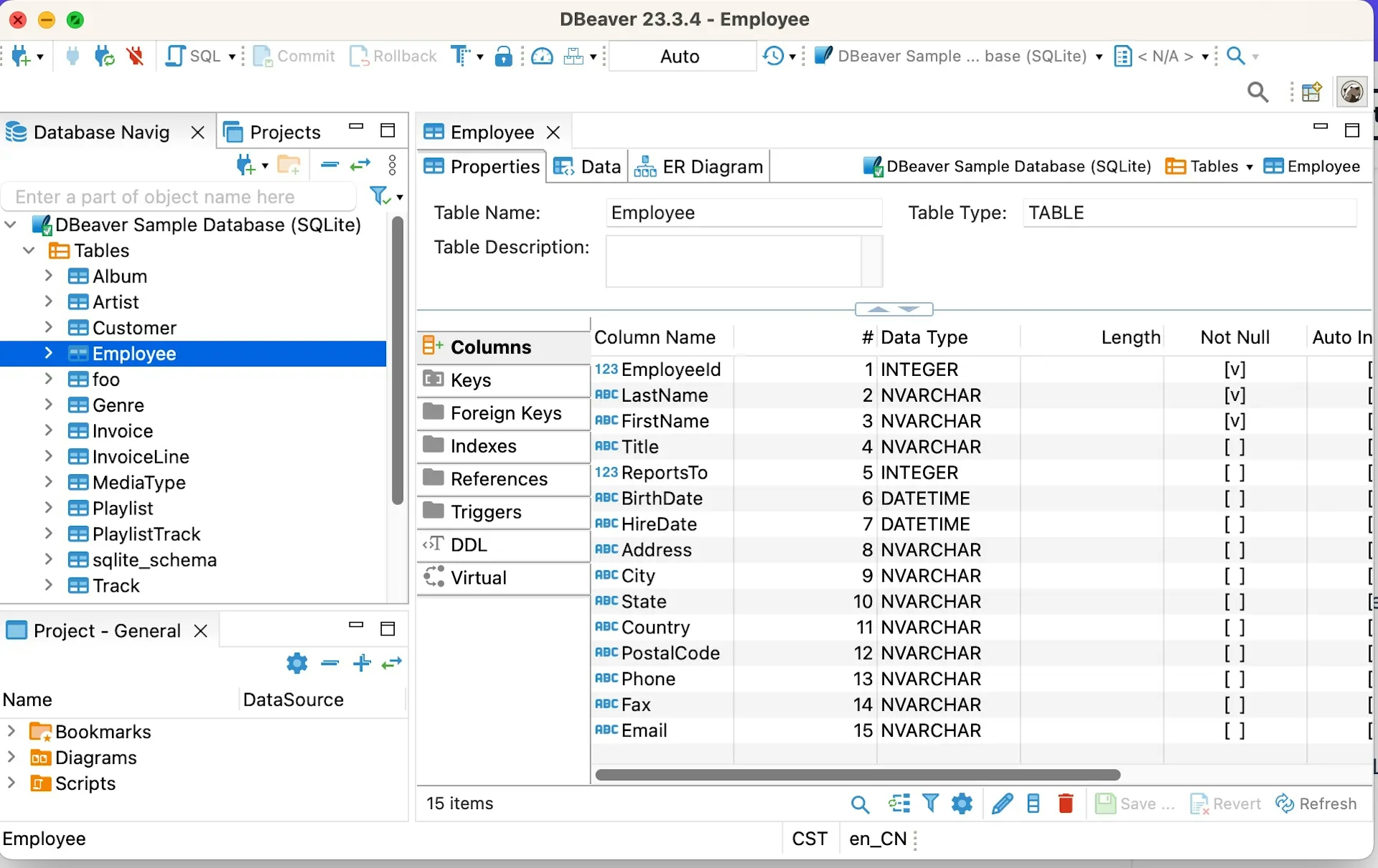
-
Bytebase: A web-based GUI platform that consists of an issue-based change management system and a SQL Editor for querying.
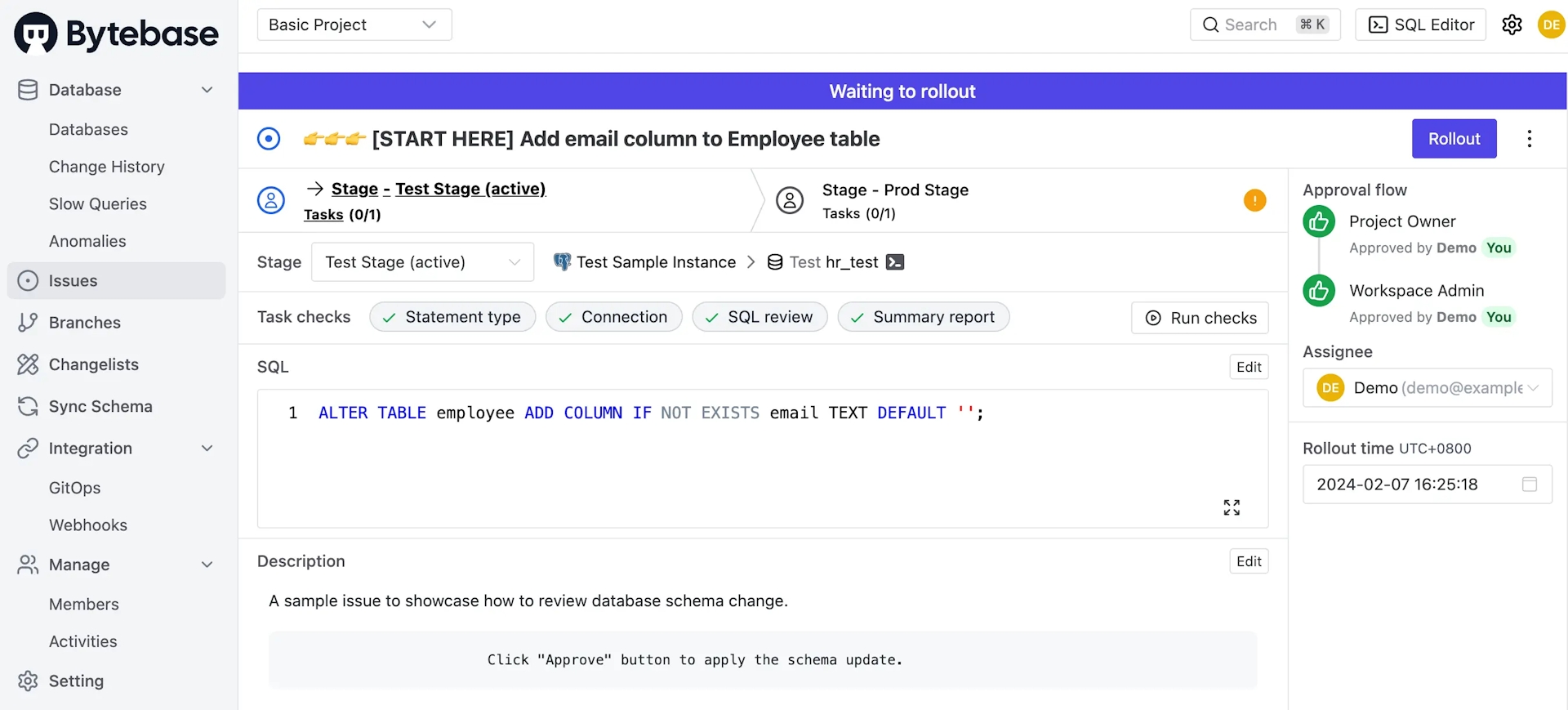
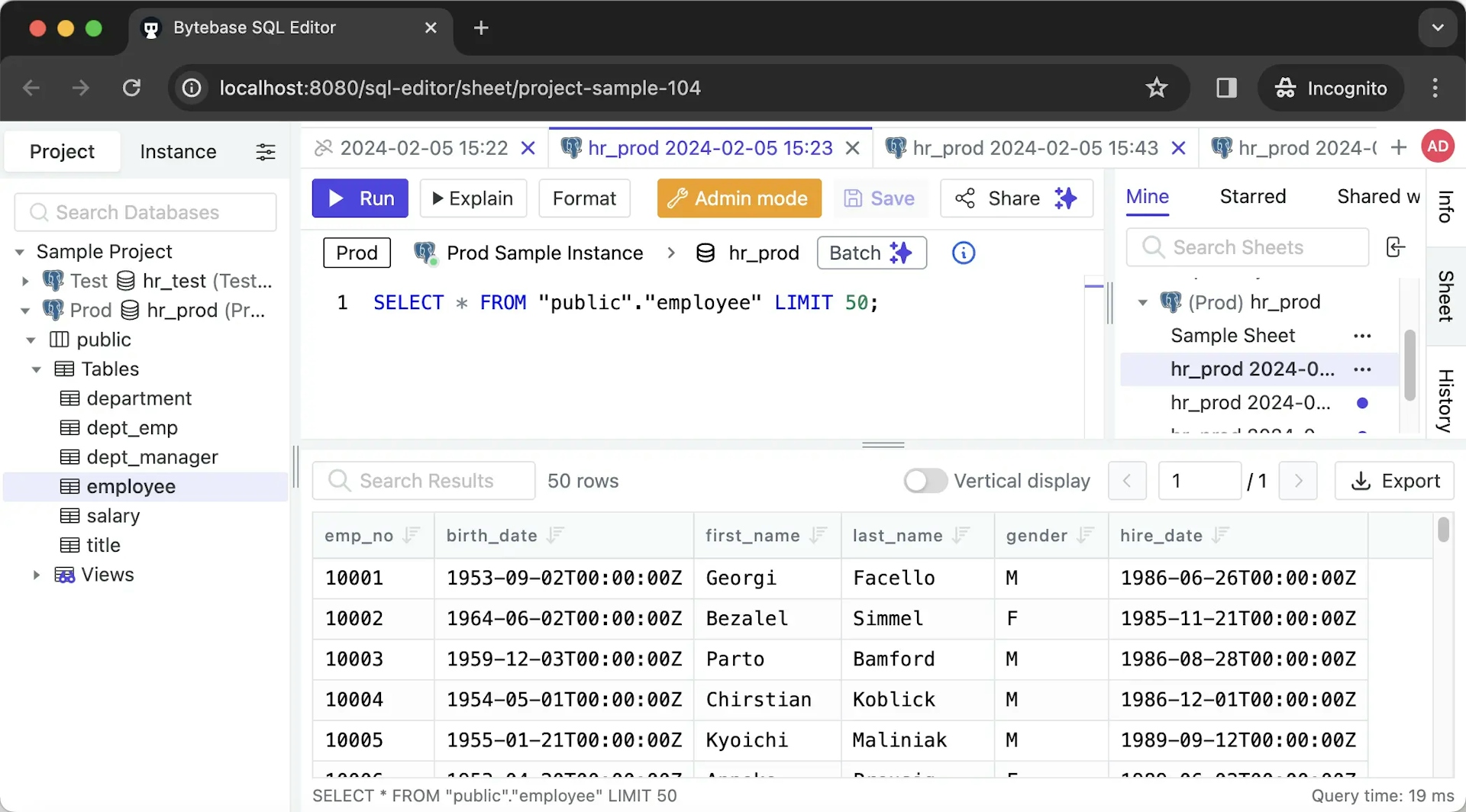
Installation
-
DBeaver: You can download it from the official website. To run the team version, Linux or macOS is required to deploy a host.
-
Bytebase: Go-based tool, a self-contained binary with no external dependency. Also provides Docker and Kubernetes deployment.
Supported databases
-
DBeaver: The Community version supports over 100 databases with basic features, including MySQL, PostgreSQL, and Oracle. The Pro version adds more features and also support for NoSQL databases such as MongoDB, Cassandra, and Redis, as well as cloud databases like Redshift and BigQuery.
-
Bytebase: The Community plan supports more than 20 databases with full features, covering both SQL databases such as MySQL, PostgreSQL, and Oracle, and NoSQL databases including MongoDB, Redshift, and Redis.
Query
-
DBeaver: You can query a table either by double-clicking on it or by manually writing SQL with templates. The GUI offers a wide range of detailed features even with toolbar customization.
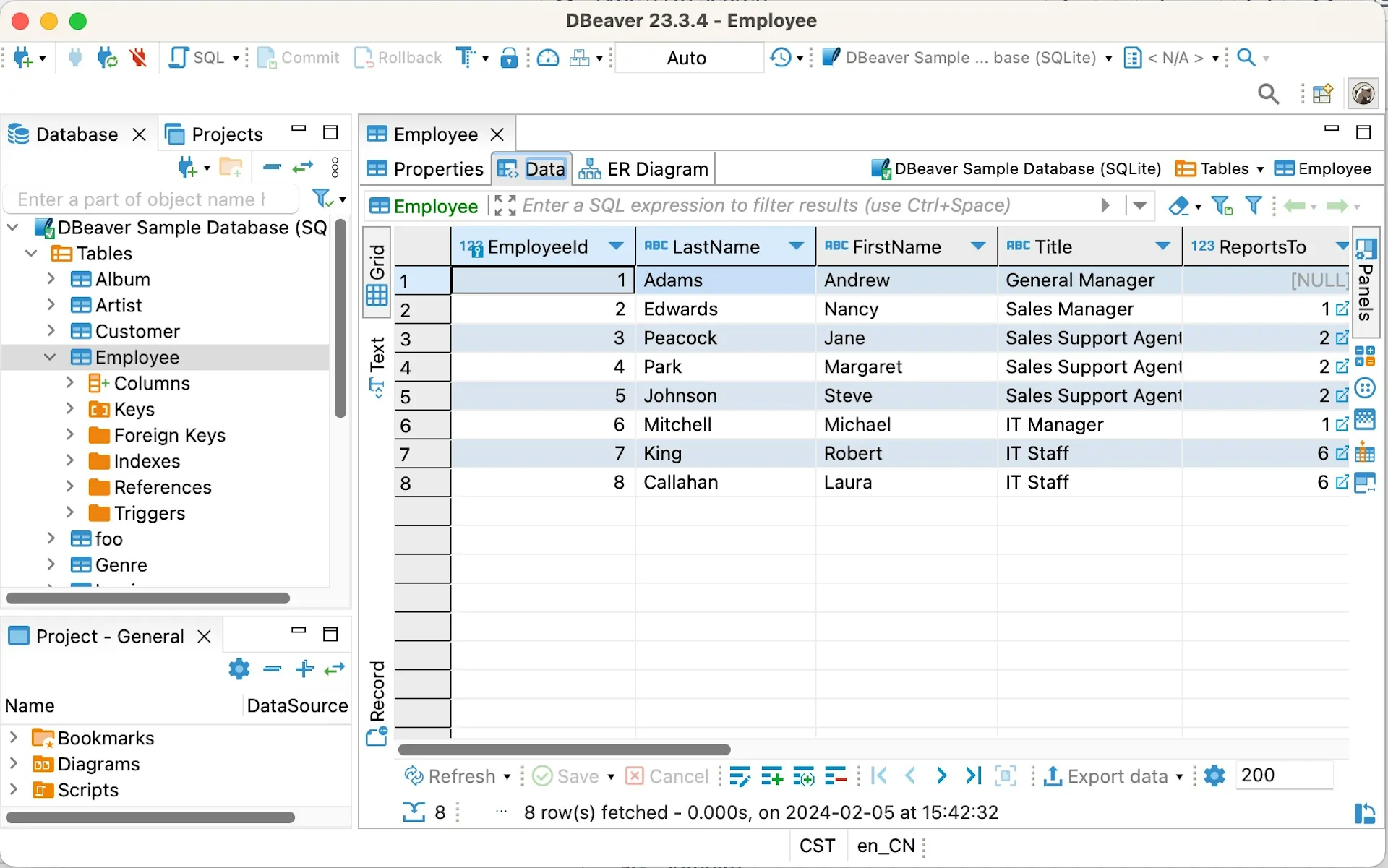
You may save your scripts. With the Team version, you can also share the script with your team.
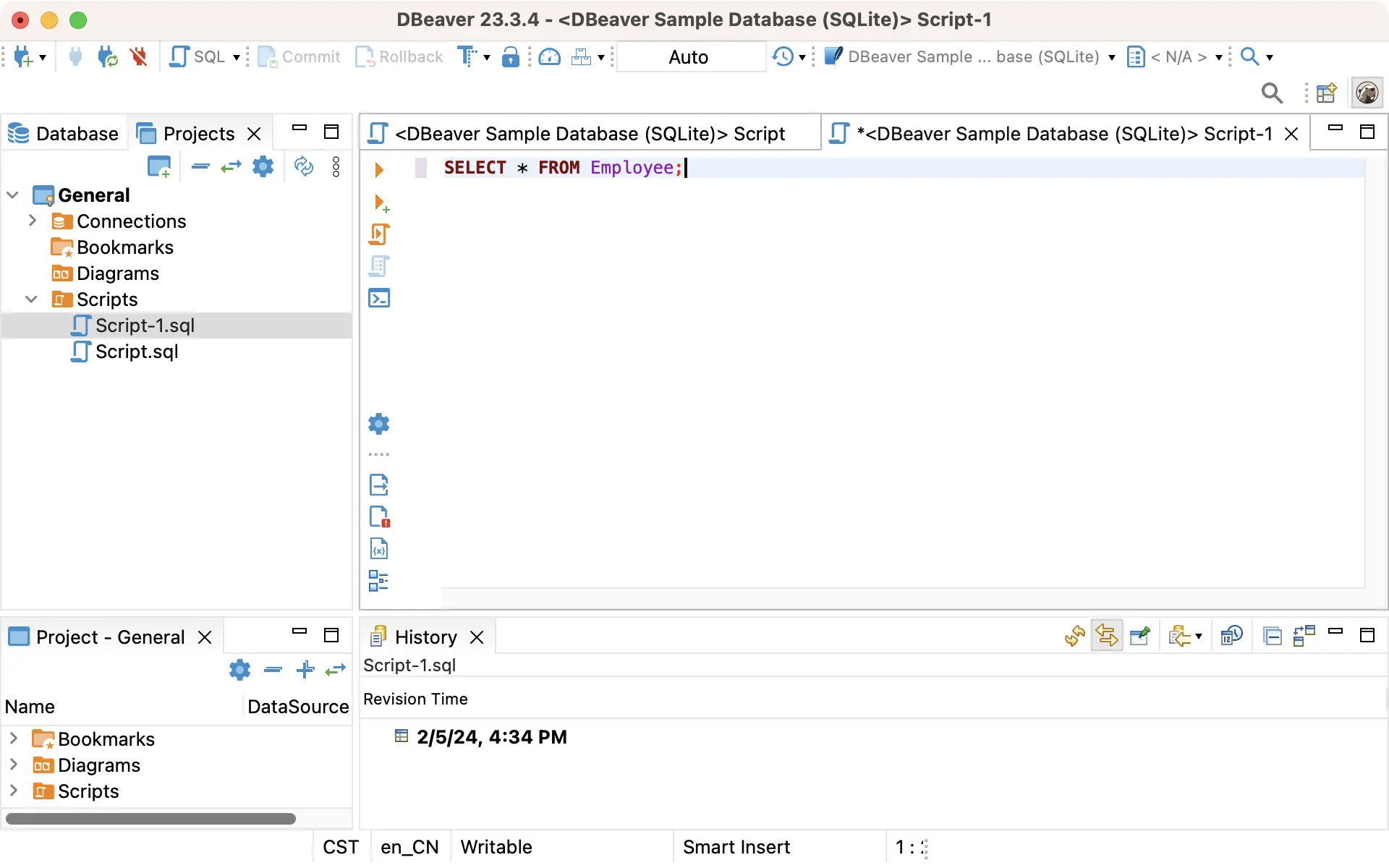
-
Bytebase: SQL Editor is used to execute queries. You can query a table either by double-clicking on a table or by manually writing SQL with the help of auto-completion. Although the GUI is slightly simpler compared to DBeaver, it suffices for everyday use.
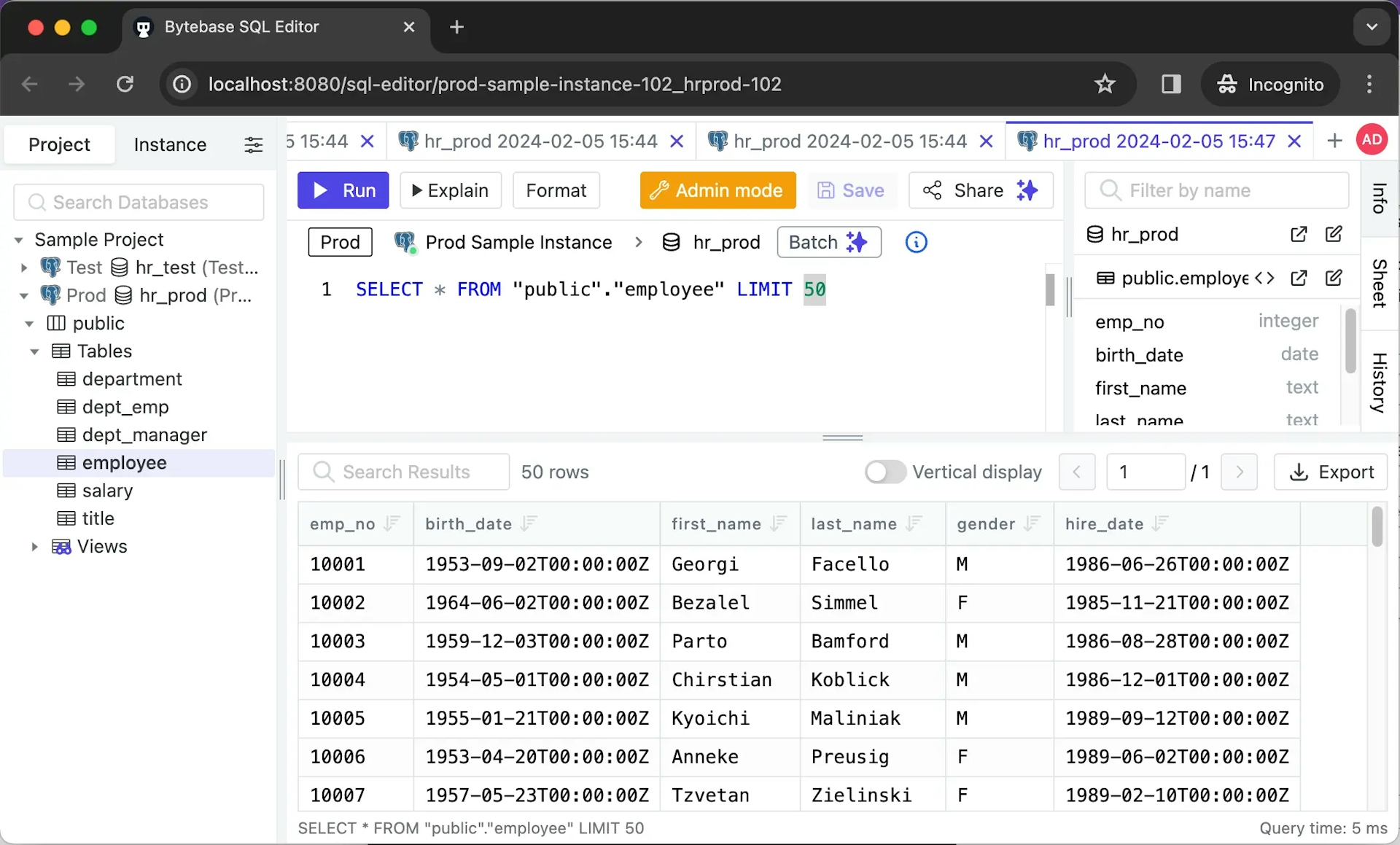
You may save your scripts or star specific saved scripts for easy access. Starting with the Pro plan, you may also share the script with your team.
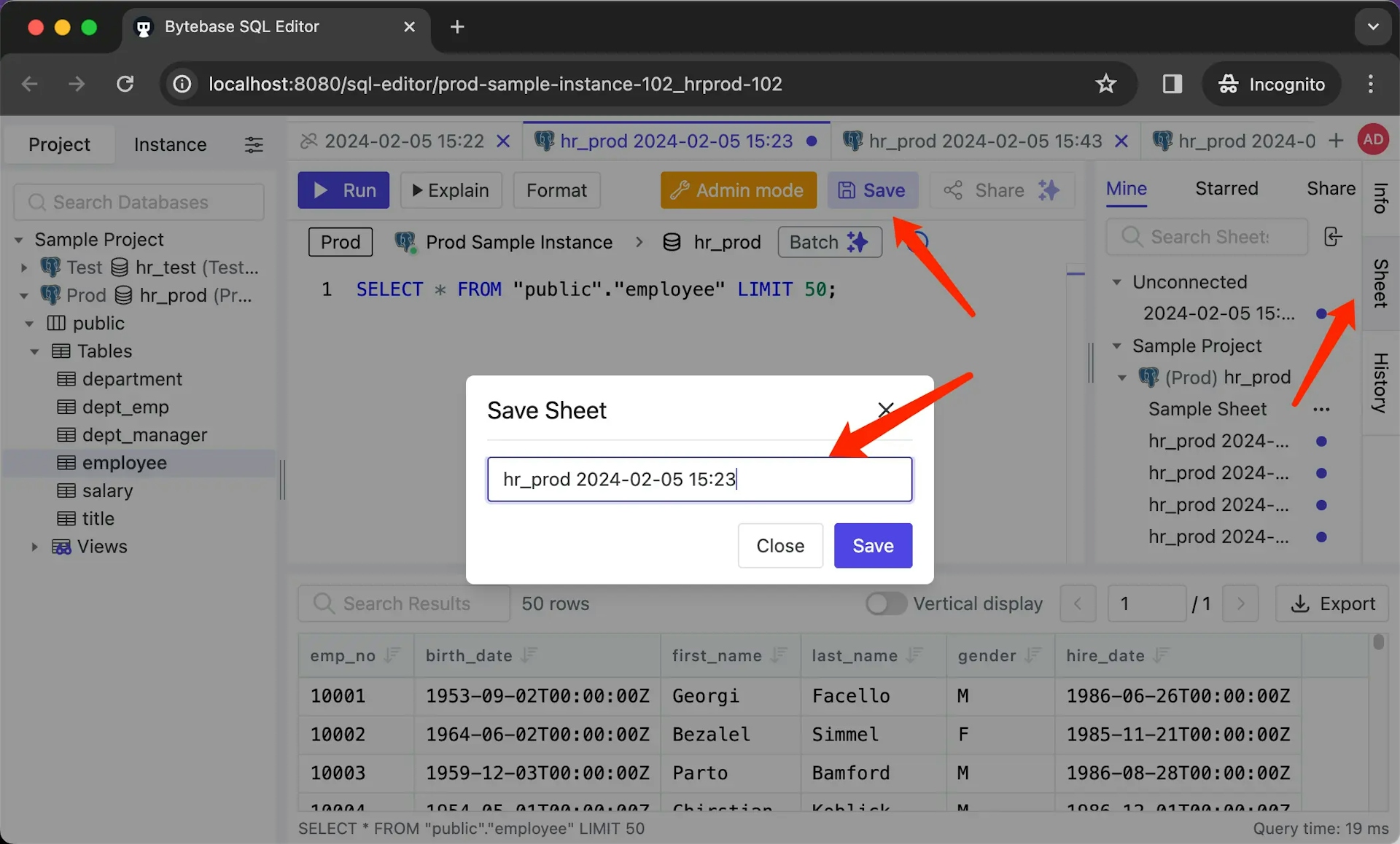
Change
-
DBeaver: After querying a table, you can edit the data directly in the table view, or you can write SQL script manually and execute.
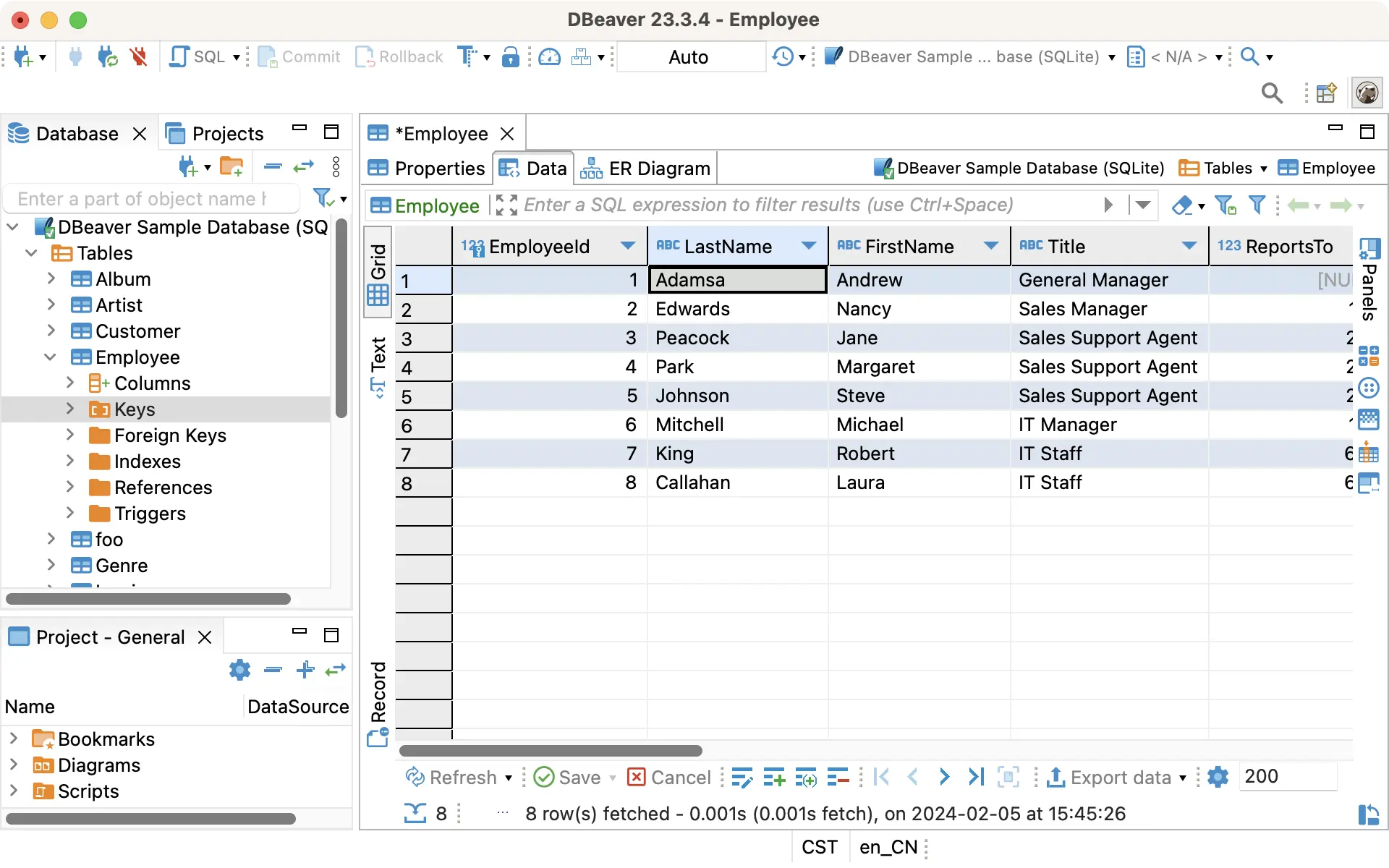
The changes will be recorded in the transaction log.
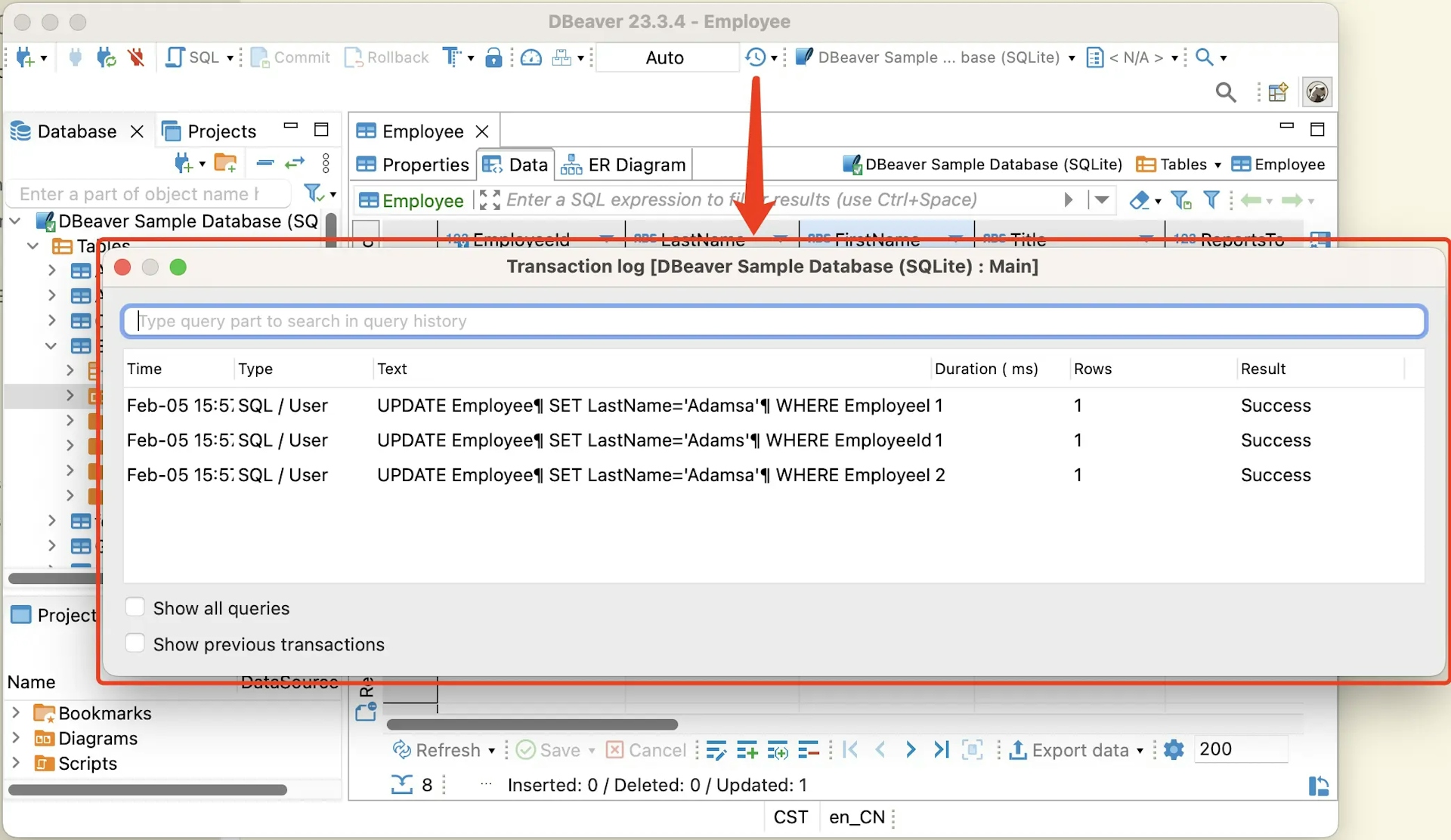
-
Bytebase: Every change to the database should proceed through an issue. The issue will automatically bring you SQL Review, Custom Approval Flow and other related features.

Every change will be recorded in the Change History. Bytebase will also detect the schema changes made by other tools and mark them as Schema Drift.

If you write a SQL script such
ALTER TABLEin SQL Editor, you'll either create a new issue or switch to Admin mode (similar to SSH in the terminal).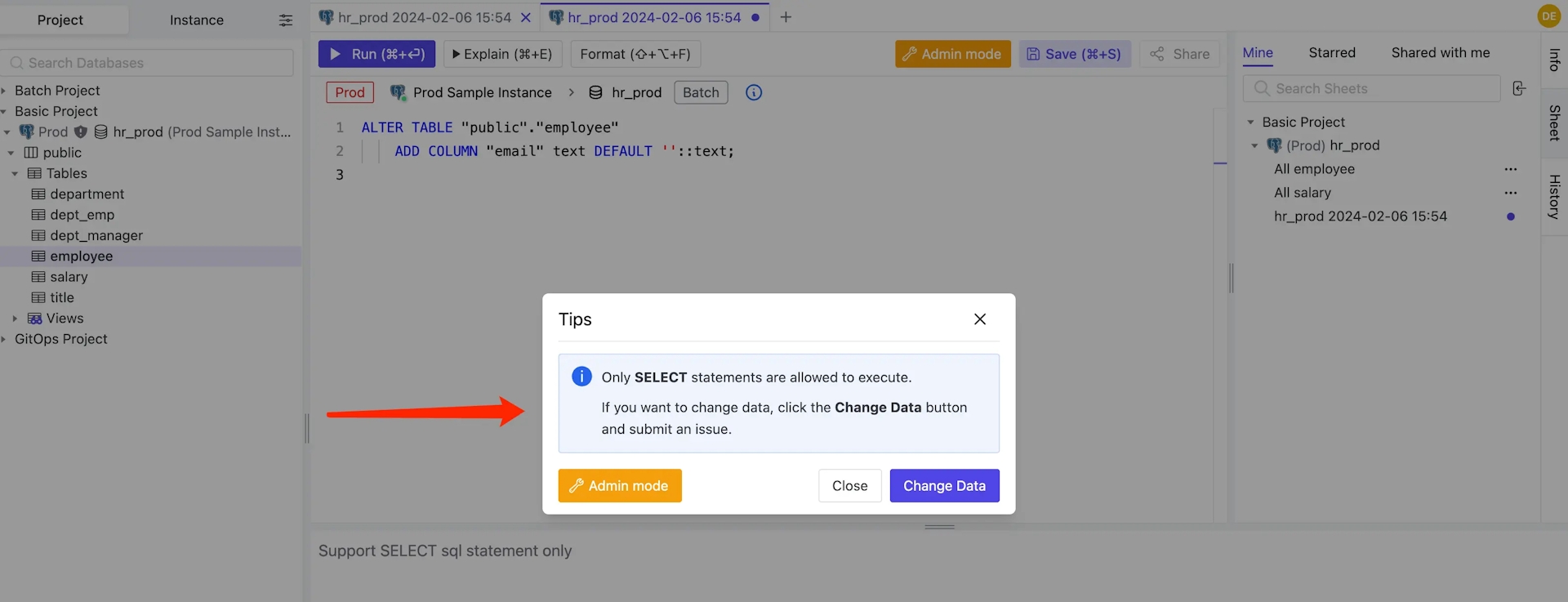
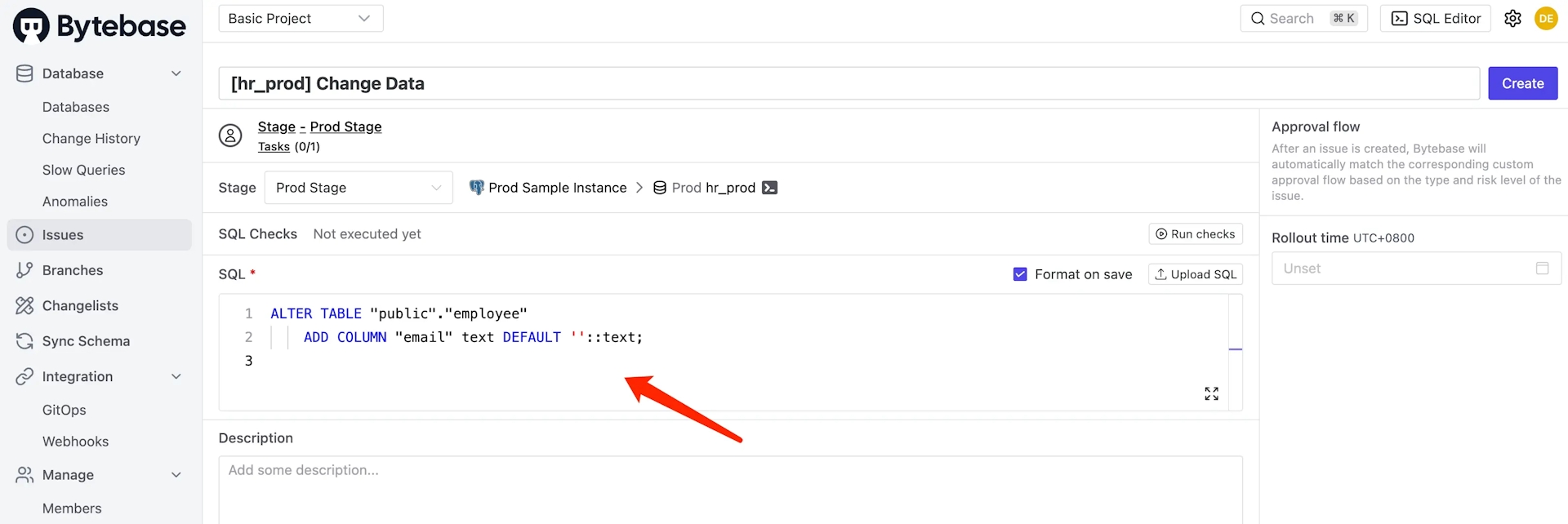
On the other hand, the more common way to change the schema is to use Schema Editor.

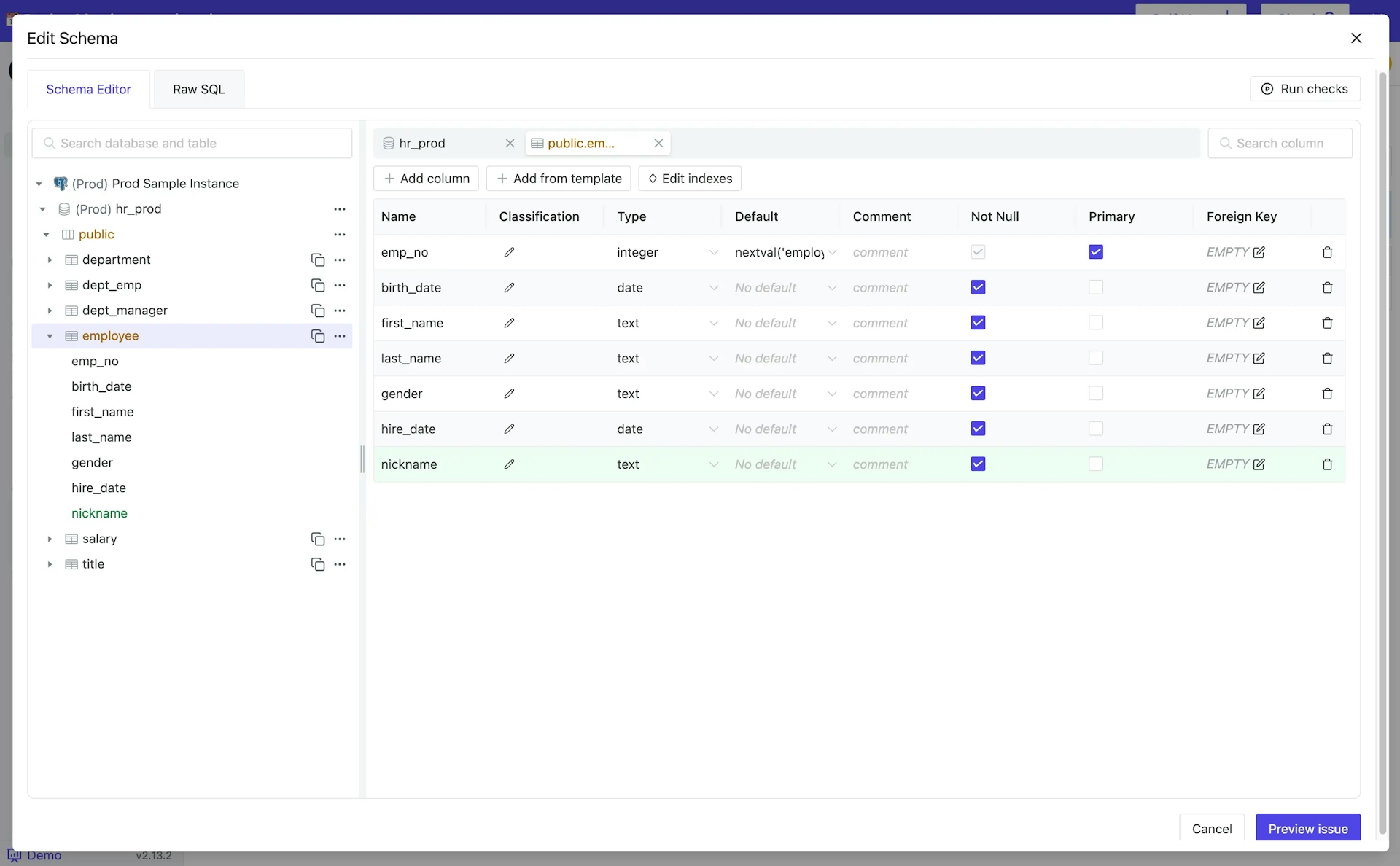
Access Control
-
DBeaver: DBeaver is client-based, thus it can't enforce centralized access control.
-
Bytebase: Roles are divided into two levels - Workspace and Project.
Workspace Admins/DBAsset up database instances and manage members.Project Ownershandle databases, issues, and members at the Project level. Individuals can hold multiple project-level roles, such asProject Developers(change database), andProject Queriers(query database).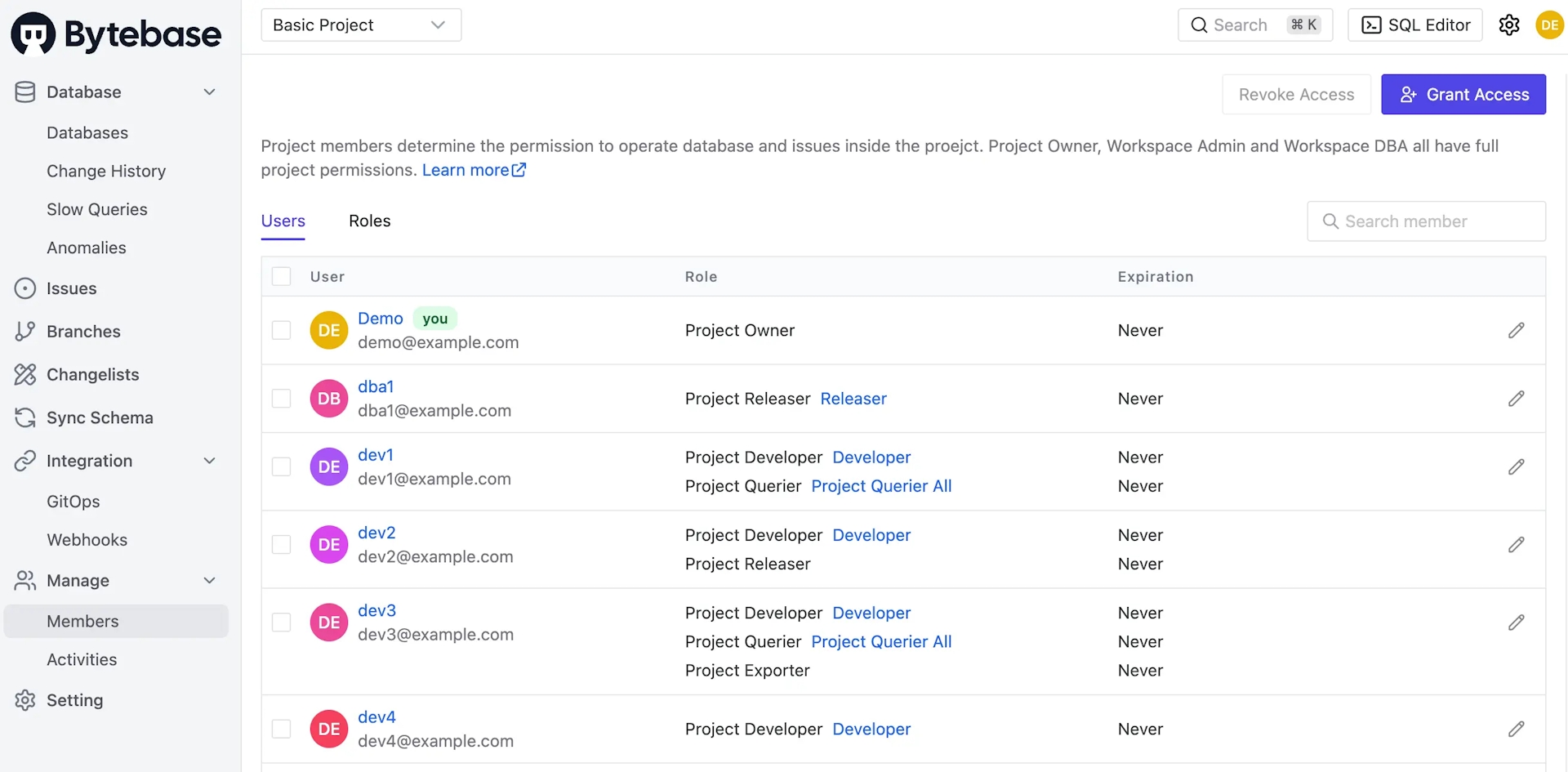
With Community plan, if one's not assigned to a project, one can't see the project at all. With Enterprise plan,
Project Ownercan grant access to specific databases or tables instead of all project databases to a specificProject Querier.Project Developercan also request to query or export a database or table with a request issue.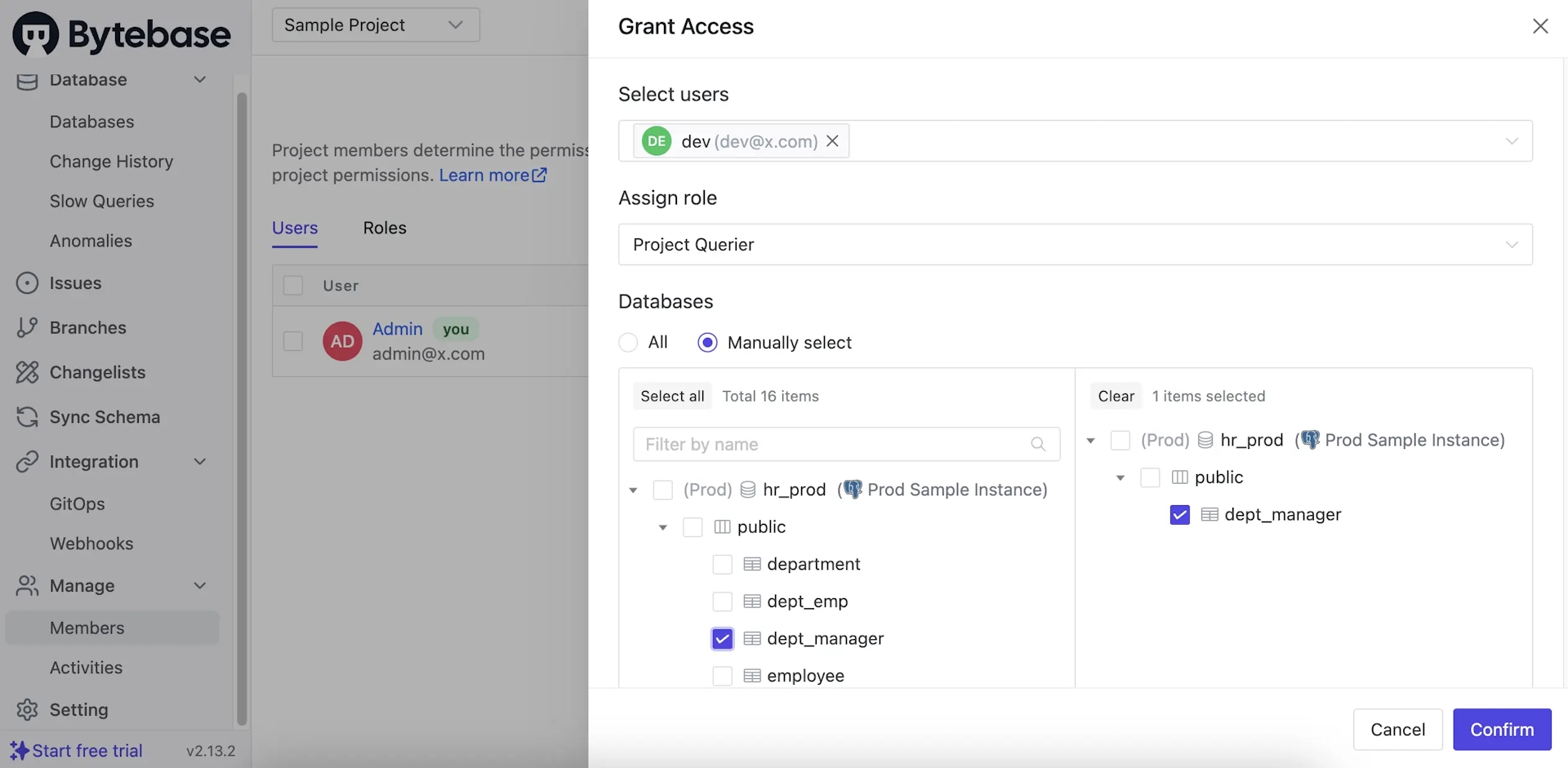
Additionally,
Admins/DBAscan set different data access controls for various environments, such as restricted access to production data and open access to development data.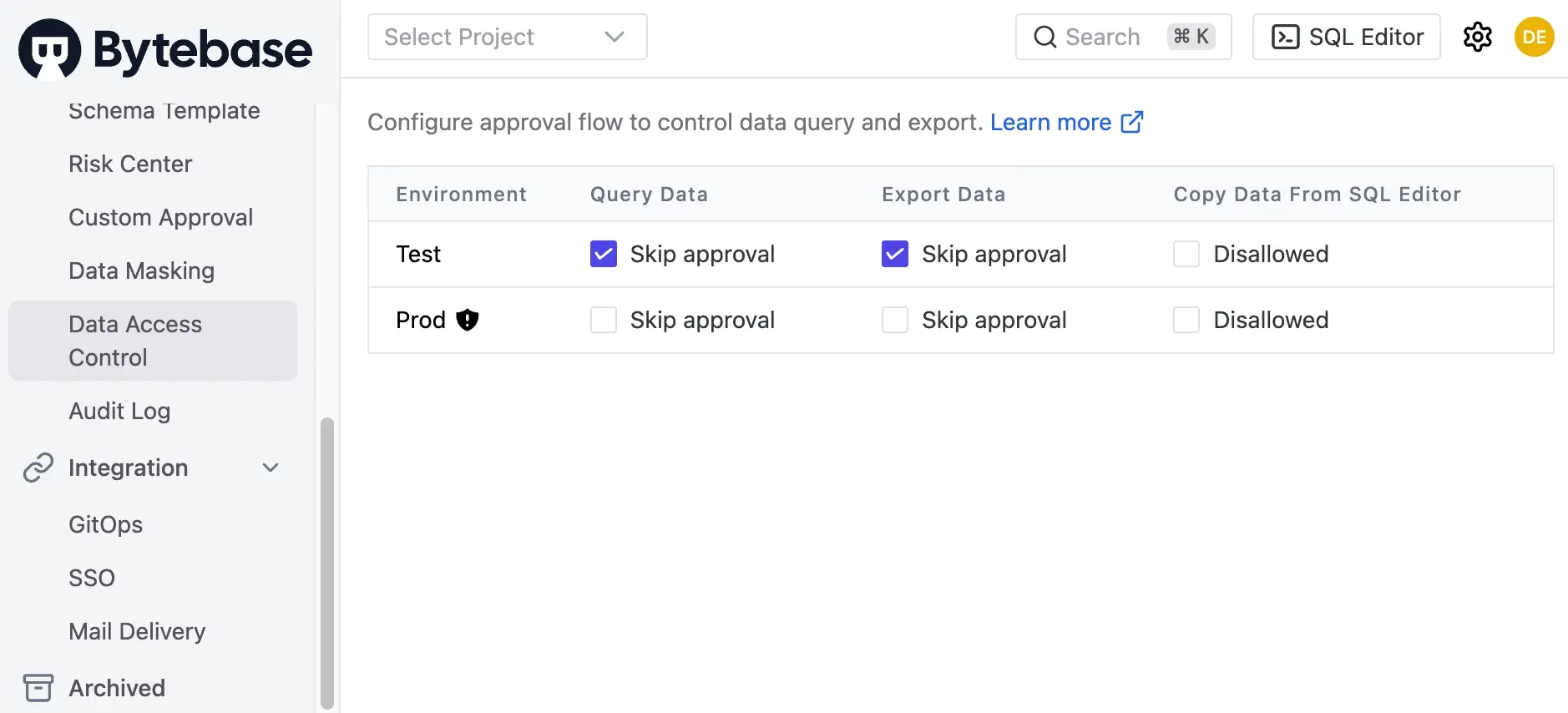
Data Masking
-
DBeaver: DBeaver is client-based, thus it can't enforce data masking policies.
-
Bytebase:
Admins/DBAs/Project Ownerscan configure data masking for specific columns within a table and can also authorize particular users to access the original, unmasked data.Project Querier, on the other hand, is limited to accessing only the masked data.Furthermore,
Admins/DBAscan define semantic types for masking algorithms, such as email, phone, credit card, etc. As a result, the data will be masked according to the semantic type configured.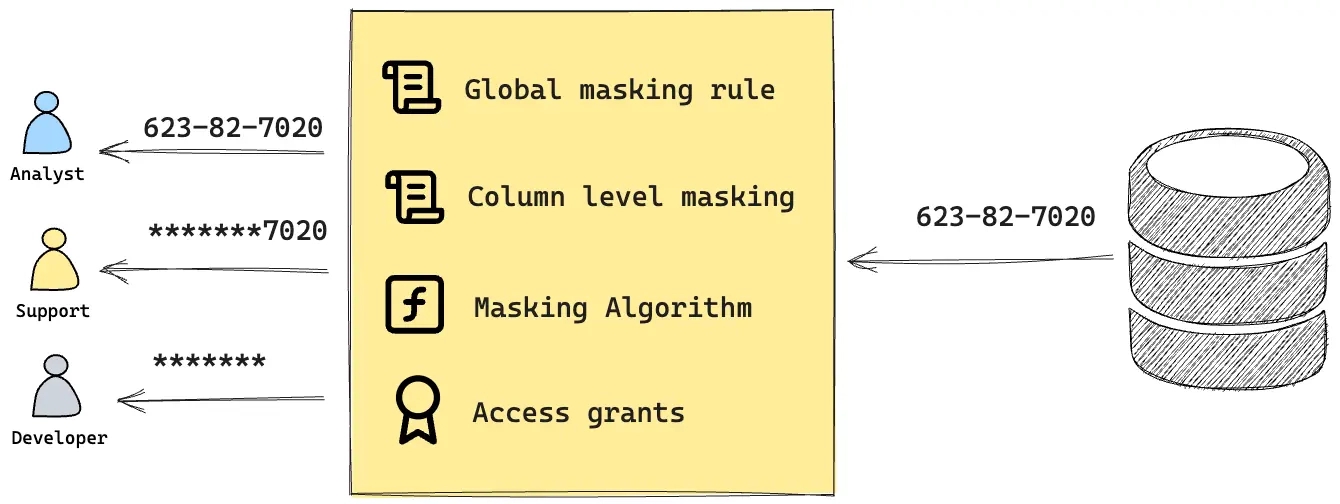
Compare
-
DBeaver: DBeaver can compare schemas, but limited to two at a time. For the schema compare results, you have the option to export them as DDL scripts or Liquibase Changelogs.
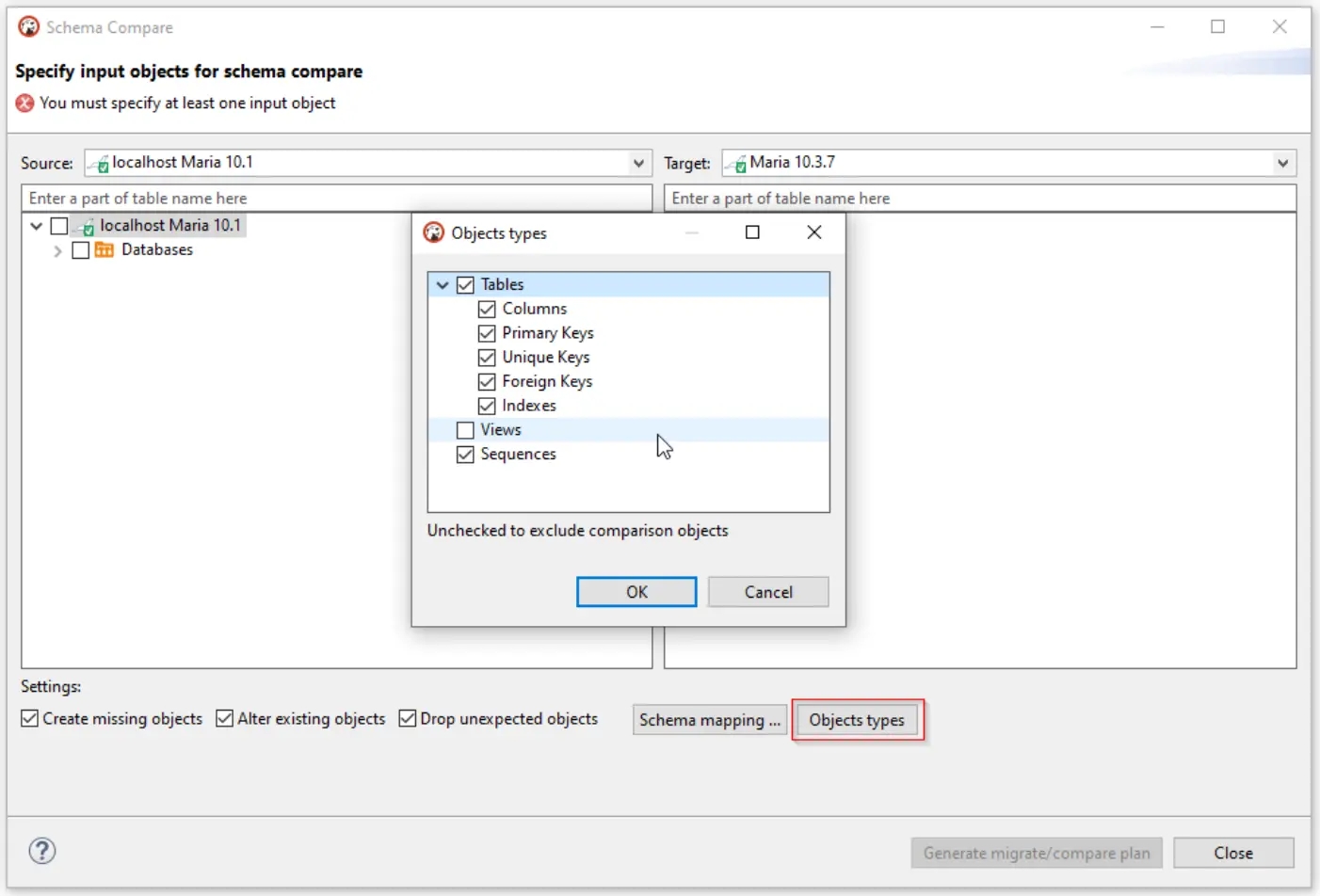
-
Bytebase: Bytebase compare schemas via its Schema Sync feature. You can initially select one database and then choose several others for comparison. The result will generate DDLs and create a new issue comprising changes to all selected databases for SQL review, approval and execution.
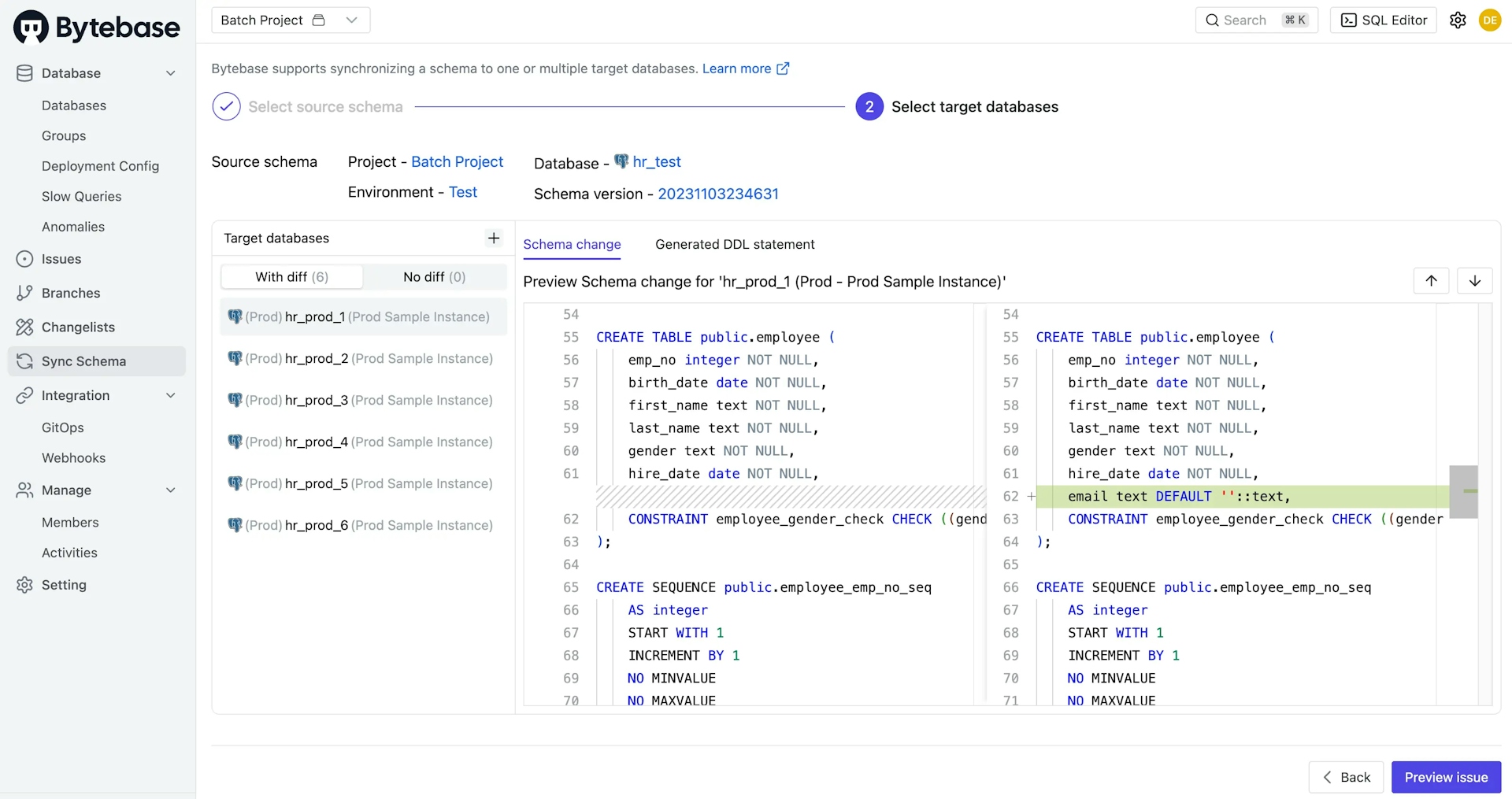
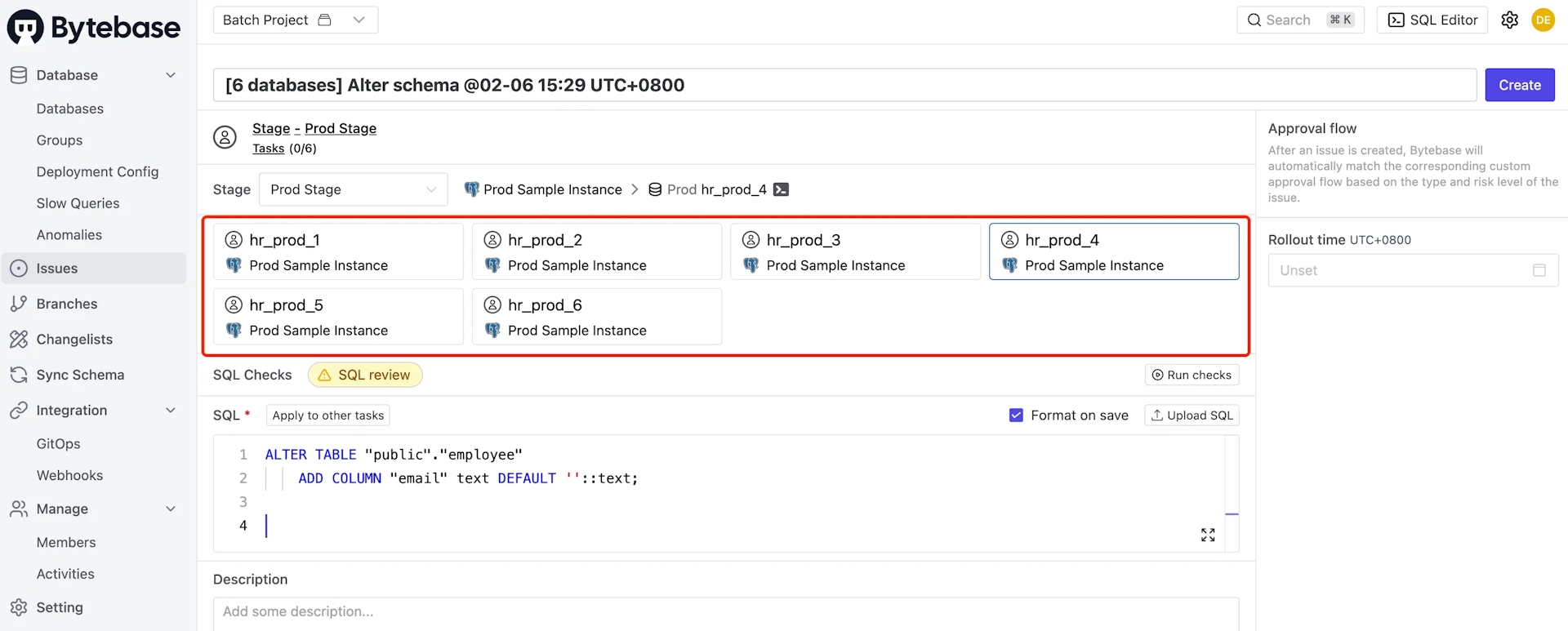
Audit log
-
DBeaver: DBeaver is client-based, thus it doesn't make a lot of sense to offer audit log.
-
Bytebase: Audit Log is available for the Enterprise plan. It records all the activities within Bytebase which can be filtered or exported.
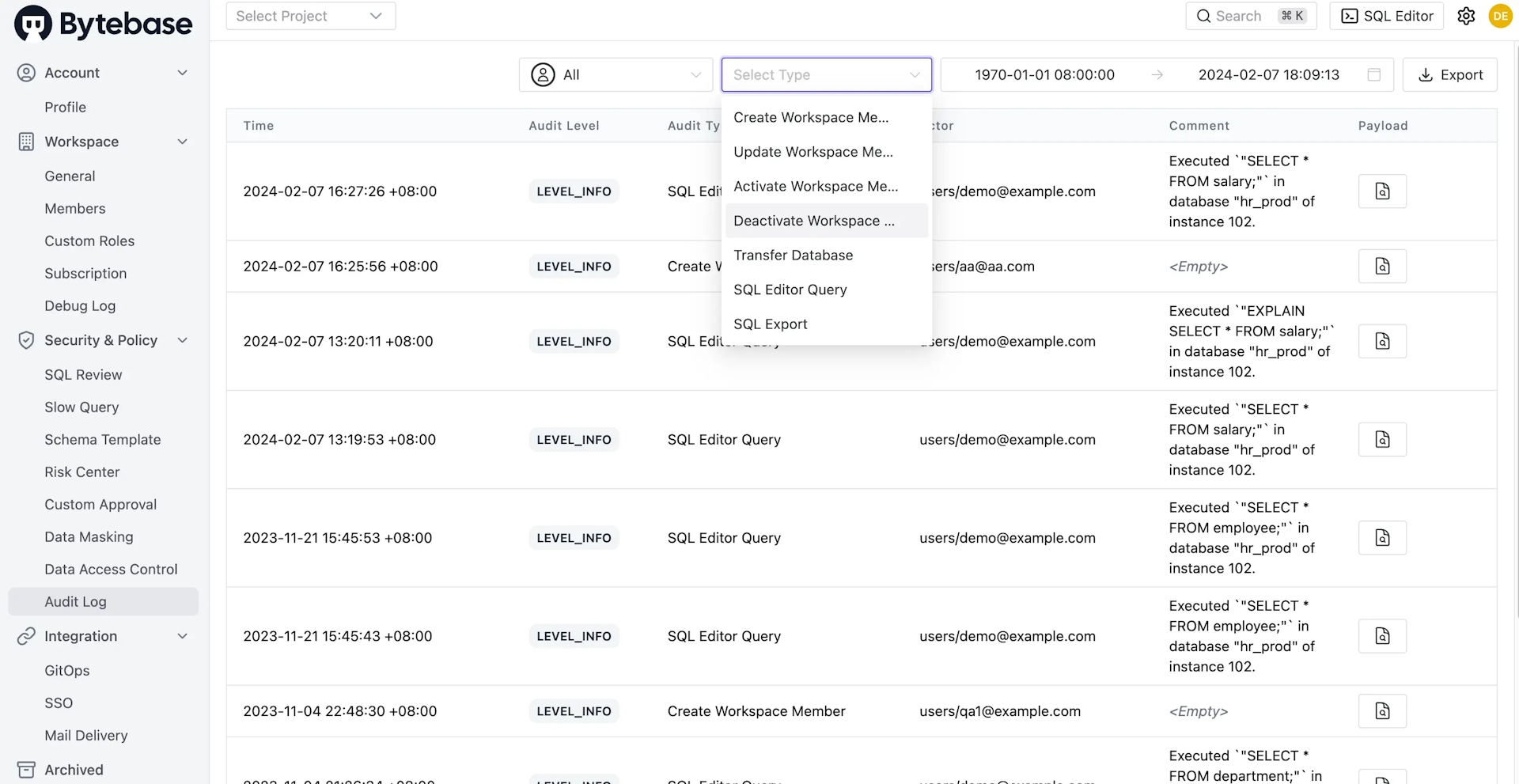
Summary
This article compares Bytebase and DBeaver across various aspects, highlighting their unique strengths. DBeaver suits individual users seeking a feature-rich universal database tool, while Bytebase is ideal for collaborative database management with access control and change review. After all, in any use case, feel free to pick the one you're most comfortable with.

